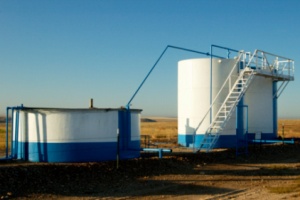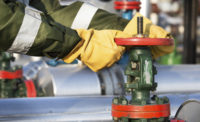 The state of North Dakota, OSHA and MonDaks Safety Network formed an alliance recently to improve oil field safety. The group plans to take on safety standards relating to hydrocarbon inhalation, the Bismarck Tribune reported.
The state of North Dakota, OSHA and MonDaks Safety Network formed an alliance recently to improve oil field safety. The group plans to take on safety standards relating to hydrocarbon inhalation, the Bismarck Tribune reported.
Oil field workers often have to climb atop large tanks to monitor crude oil stored on well sites. When they open them, they can be exposed to potentially fatal carbons, like butane and benzene, present in Bakken crude.
"When you first crack open that tank, you're going to get a pretty heady plume," said Eric Brooks, the North Dakota area director for OSHA.
Electronic gauging technology is available and widely used in Canada, but manual gauging is considered more accurate by many producers, said Monte Besler, who owns the hydraulic fracturing consulting company The Fracn8r.
If the alliance can't eliminate manual gauging of tanks, another consensus will need to be reached, said Dennis Schmitz, chairman of MonDaks Safety Network, a regional organization that promotes safety in the oil and gas industry.
"I'd love to get to the point where we don't get on top of tanks to monitor them," Schmitz said.
He added that side gauges, better personal protective equipment or different types of venting might be options, too.
Schmitz said for change to occur, large oil producers will have to buy into the solution and vet subcontractors to make sure they follow proper safety protocol. He said the alliance will help by bringing all of the players to the table, which hasn't happened before.



